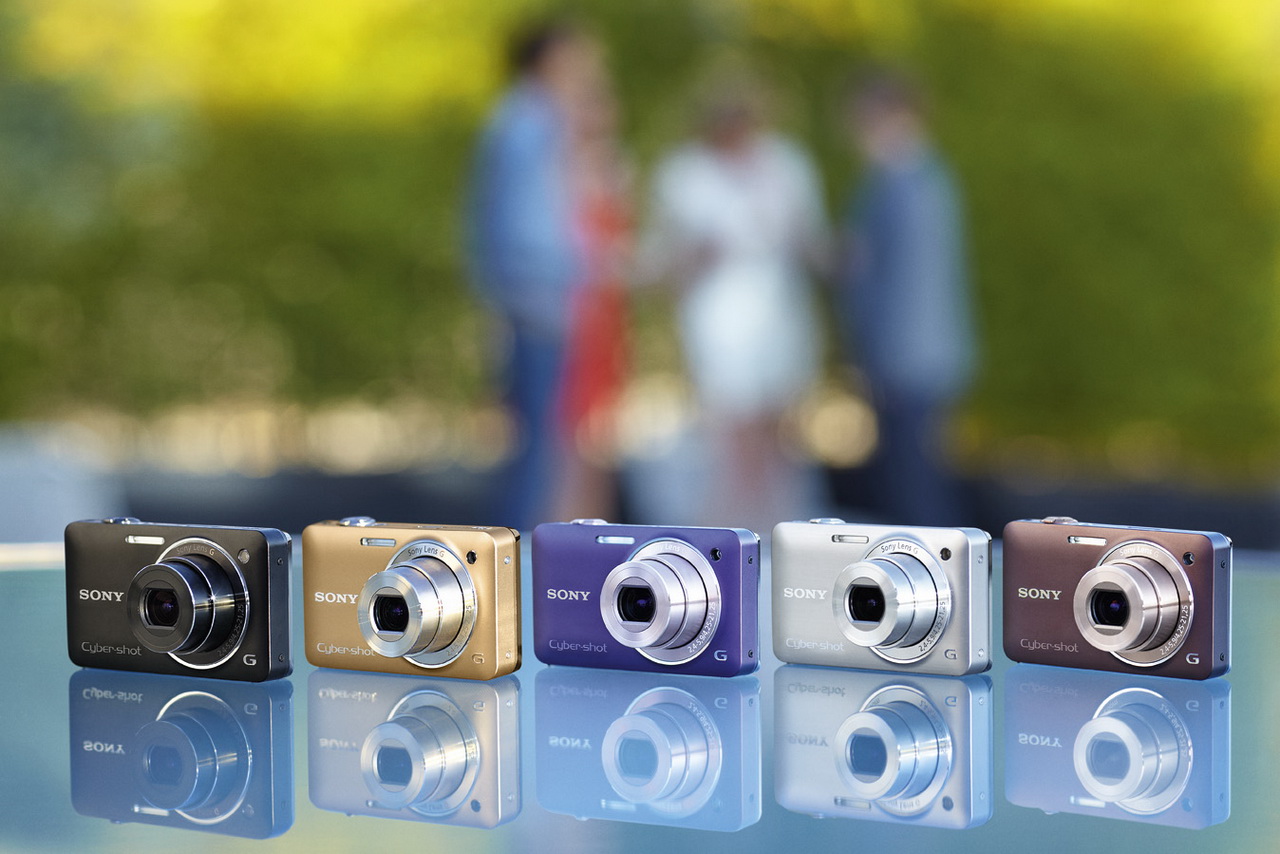Introduction
Also referred as point and shoot, these types of cameras are designed primarily for easy operation and light carrying. They take still pictures but also movie clips that are stored usually on a memory card. The first digital cameras weren’t capable of capturing at least one Megapixel images, and many didn’t have a memory card slot for a memory upgrade. Today, the compact digital cameras are very small, with lots of useful features and shooting versatility, and they can go up to even ten mega pixels and more.
Construction
The construction of these cameras is usually as compact as possible. All component parts like the flash, battery and memory card socked and the LCD display, are gathered in a body as small as possible. The camera body is made from light metal alloys or rugged plastic.
The camera lenses have a zoom range that can vary between 28 and 135 mm (as for 35mm cameras). The lens has a relatively good construction and quality due to the multiple glass elements and coating protections. Choosing a compact camera with a wide optical zoom range like 28-112 mm, for example, will permit you to capture a higher angle of view for closer objects, but also to zoom into a farther distance than with a just 36-85mm lens (35mm equivalent).
The camera imaging sensor is always very small, making inevitable the apparition of noise in images, particularly if the camera has a higher number of mega pixels which are gathered in the same small size sensor. However, the camera designers were able to push the image quality to an acceptable level due to the development of better lenses with every enlargement of sensor resolution, managing a kind of compensation for the small sensor drawback.
Every compact camera has a built-in flash, this making possible taking images in bad lightning.
Features
Usually these types of cameras are very automated, still, some of them have enough options and settings that can allow multiple photographic parameters to be manually changed.
Some of the parameters that can be manually selectable by the user:
Exposure time;
Lens aperture;
Sensor;
ISO;
Flash on/off;
Lens focus (through menu);
Focusing type;
White balance;
Metering type;
Shooting mode (single/continuous);
Contrast, Sharpness Picture and movie quality.
Other image parameters that can be changed, but depending of the camera extra-features, can be:
Image filters;
Special effects;
Image audio attachment.
More than this, compact cameras have a few preset modes that will allow the camera to take adequate images in a given selected mode, adjusting its automated settings accordingly. Some of these modes can be: portrait, sport, macro, landscape, night, etcetera.
In picture mode, half pressing the shutter button will allow the camera to measure the correct exposure and to focus the subject right, full pressing the button will capture the scene and then will record the image onto the memory card. Thus the name point and shoot, you don’t have to worry about any settings. It’s recommended that picture resolution and quality to be set up at maximum, is the only way to benefit from the whole camera potential.
In movie mode, full pressing the shutter will start capturing the movie and the second press will pause it. Some compact cameras have the ability to capture sound while recording movies, or the ability to zoom in and out while recording. The movie resolution and quality can also be changed. Movie options can be 320×240 with 30 FPS or 640×480 / 15 FPS, the best is to have a camera with both large resolution and FPS, ex: 640×480 / 30 FPS, and don’t forget about sound! It’s better that the movie recording time to be unlimited, except memory card size, this will allow recording complete movies of one hour or more, and not just 10 minutes, for example.
Advantages
Being easy and intuitive to operate, these cameras are the perfect tools for kids, old people or for women who can’t set the DVD’S watch. The lightness and small size allow people to take these cameras anywhere, bringing many interesting pictures that with a bulky photo equipment could not be possible.
Disadvantages
Because of the small size which isn’t suitable for sturdy handling and doesn’t allow emplacement of important function buttons on the body, and the use of the small sensor and a lens which can’t reach the quality of a basic 35mm lens, compact cameras have the next drawbacks:
– Limited range of advanced and manual settings
– Average image quality with high noise, low dynamic range and lots of aberrations in comparison with Digital SLR cameras.
– The camera lens is fixed, therefore, cannot be changed – though can be used lens converters to increase the lens capabilities, but they are very expensive in comparison with camera price.
– Long time responses – can be very hard to capture a particular state from a fast moment.
Conclusion
It’s obvious that compact digital cameras can be used by every member of a family but also by a mountaineer who can’t afford to weight-up himself with over 2kg professional photo equipment, which even can compromise his trip.
For some amateur photographers isn’t a problem to use a compact digital camera, they are very light, they don’t become unpleasant to carry around and still have an acceptable image quality. Some other amateurs will opt for a little improved digital camera, which is the SLR-Like, or even the Digital SLR. Professional photographers may use compacts in their everyday life but not for their work.
People who want an easy to use camera for family, vacations, parties or other events, and they aren’t pretentious about high image quality and complex manual controls, can consider buying these cameras.
